Mr. Le Hoang Phong, Academic Director of YOUREORGEducation and Training Organization, sent Thanh Nien Newspaper an article outlining his views on the English score distribution for high school graduation in 2025 and the big questions about education waiting for people to solve.
In terms of testing, this is an ideal score range.
From a technical perspective, the English score distribution in 2025 is a clear improvement. Instead of continuing the rightward trend as in previous years, this year's score distribution has achieved a standard bell shape, with the average score of 5.38 almost coinciding with the median of 5.25, and the standard deviation is only 1.45.
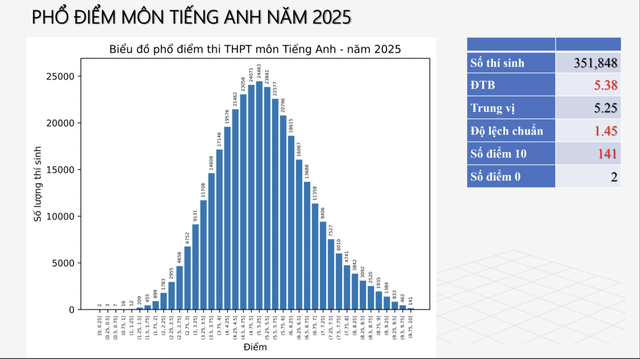
English score distribution for high school graduation 2025
PHOTO: MINISTRY OF EDUCATION AND TRAINING
In terms of testing, this is an ideal score spectrum: no extreme "skewed tail", no collapse due to too many 10s, and no bottom drop due to tricky questions. Only 2 exams scored 0 and only 141 students scored 10 out of more than 351,000 exams - equivalent to 0.04%, a record low in many years. In other words, the 2025 exam is tightly designed, with good control of differentiation, especially in the high-scoring group.
However, from the perspective of education, especially educational equity, this perfect standardization raises a big question mark. When the score spectrum is strongly compressed around the average and the standard deviation narrows to 1.45, the development space for students at both ends of the ability spectrum, especially those who study the correct and complete curriculum, has been alarmingly shortened.
What does the English score data show?
Compared to 2024 - a year with a slightly right-skewed but still stratified score spectrum - this year's high-score space is clearly "shortened".
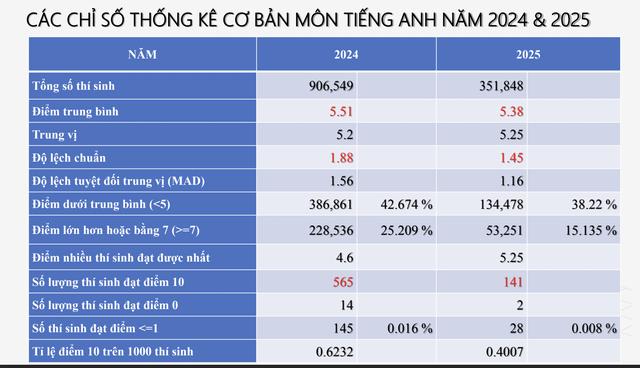
Comparison of basic statistical indicators of English subject in 2024 and 2025
PHOTO: MINISTRY OF EDUCATION AND TRAINING
- Although 2025 has total English test taker decreased sharply (only about 39% compared to 2024), because English became an optional subject in the high school graduation exam, but the fluctuations in the score distribution still revealed many noteworthy signals about the test design and differentiation philosophy.
- Average score slightly decreased from 5.51 to 5.38, showing a moderate increase in the difficulty level of the test. However, this change is not large enough to cause controversy, if only looking at the general level.
- Standard deviation dropped sharply, from 1.88 to 1.45, showing that the score spectrum has been "compressed" to the average range. This phenomenon clearly reflects one thing: the exam has tightly controlled the differentiation in depth, while limiting the ability of good and excellent students to make a breakthrough.
- Percentage of students achieving 7 points or more reduce from 25.2% to 15.1%, a decrease of nearly 40% in absolute terms, although the total number of exams also decreased. If converted, in 2024 there will be about 228,450 students achieving 7 points or more; in 2025, this number will be only 53,114 students - equivalent to a decrease of more than 175,000 good and excellent candidates, an alarming decrease in the ability to classify groups of students at the top.
- Number of students achieving perfect scores (10 points) decreased from 565 to 141, a decrease of 75%, but if calculated as a percentage of the total number of candidates, in 2024 it was 0.062%, and in 2025 it was 0.04% - an extremely small level, showing that the exam has almost "locked" the door to absolute scores.
- Meanwhile, below average student ratio only slightly decreased, from 42.7% to 38.2%, meaning that there are still more than 134,000 candidates in 2025 who do not achieve the average score, nearly half of the total number of exams. This shows that the 2025 exam has not really supported the group of weak students to make significant progress, even though the score distribution has been adjusted in a technical direction.
'Stuck' in the GPA spectrum
In this year’s exam, a paradox worth pondering emerged: many students who reached level B1, meaning they had studied correctly, studied enough and met the output standards of the general education program, could not achieve the high scores expected. Not because they were not capable enough, but because the exam questions had quietly shifted to level B2, even reaching the C1 threshold, with a dense concentration of academic vocabulary, journalistic writing style, and language structures beyond the main curriculum.
Even students with a solid foundation in textbooks, if not exposed to an academic test format like IELTS, can still easily "break" at the end of the test. These questions not only require language skills beyond B1 standard, but also require analytical skills, information comparison... things that the general education program does not provide systematically and universally.
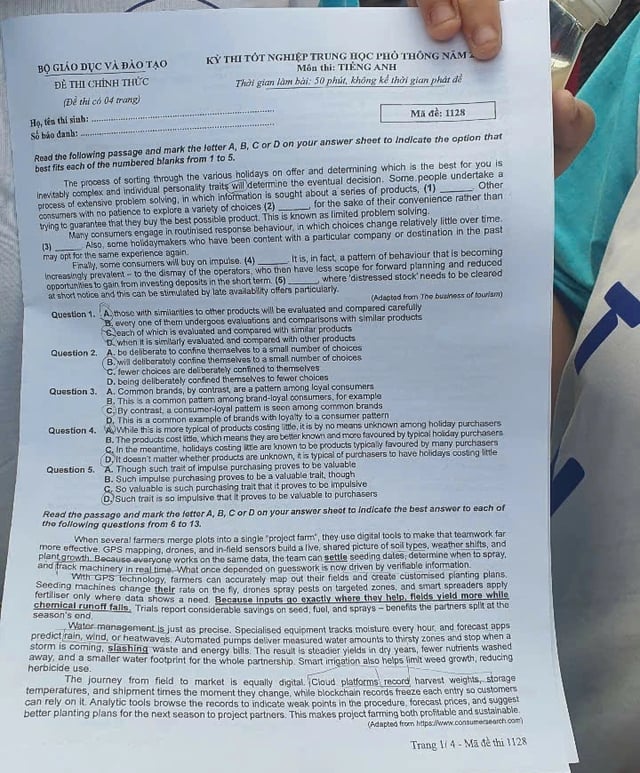
Not only was the exam reflected as difficult, with much knowledge outside the main curriculum, the 2025 high school graduation English exam was said to be too long, printed in too small, and very difficult to read.
PHOTO: THUY HANG
As a result, the group of students who are serious about following the output standards do not have enough space to demonstrate their true abilities, and are even held back from the opportunity to break through. In that context, instead of being a mirror of honest measurement, the exam has become a "glass ceiling": transparent, seemingly invisible, but silently limiting the potential that should be raised. And that is a clear sign that an unsynchronized system can easily turn measurement techniques into invisible barriers for the very students who are on the right track.
The nature of a national exam does not lie in selecting excellent students according to criteria outside the curriculum.
I have always believed that a test is considered good not because it produces a "nice" score range, but because it opens up development space for the entire spectrum of learners. The essence of a national exam such as the high school graduation exam is not to select excellent students based on criteria outside the curriculum, but to ensure that all students, whether from the city center or remote areas, have the opportunity to demonstrate their true abilities.
A test is only truly fair when it does not ask for anything the system has never taught, and does not reward those who simply have access to superior learning resources. Otherwise, the test becomes less of a common yardstick and more of a “side door” that is open only to those who are lucky enough to be closer to the starting line.
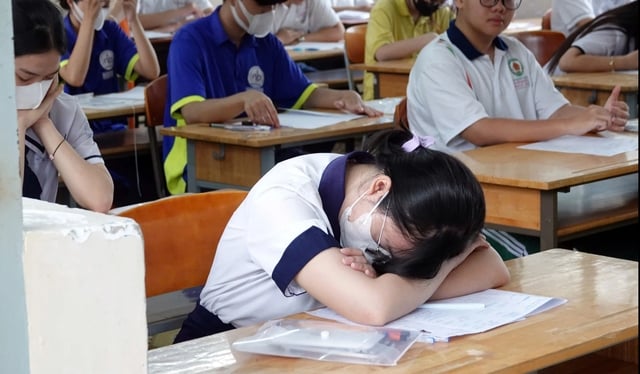
Educational equity does not come in the form of a spectrum of scores.
PHOTO: NHAT THINH
Educational equity does not come in the form of a spectrum of scores.
Clearly, the 2025 English score spectrum is a beautiful, balanced graph, well-controlled for skewness and extremes. But educational equity does not exist in the form of a score spectrum. It lives in every link of the learning ecosystem: the educational philosophy we pursue, the curriculum our teachers teach, the methods our students are exposed to, and, ultimately, how we measure results.
It is worth mentioning that this is a high school graduation exam - meaning it is a test for completing high school, not a university entrance exam for a certain school or schools. If students study the correct program, master the basic knowledge but still cannot get a good score, the fault lies not with them but with the way the system is designing the test beyond the taught competency area.
Rewriting the exam questions is a technical task. But rewriting the goals of the high school graduation exam, and adjusting the entire teaching and learning ecosystem to aim for equity, that is the real challenge of education reform today.
Source: https://thanhnien.vn/pho-diem-mon-tieng-anh-dep-nhung-con-dau-hoi-lon-ve-giao-duc-185250715235310286.htm











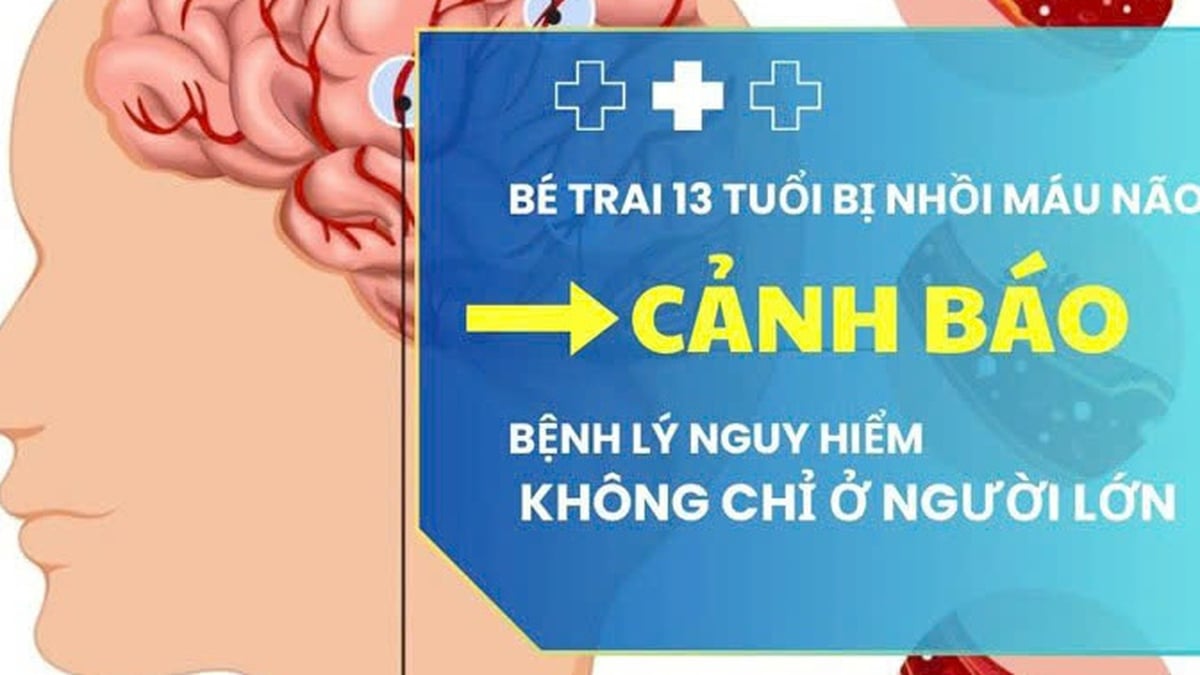



















































![[Maritime News] More than 80% of global container shipping capacity is in the hands of MSC and major shipping alliances](https://vphoto.vietnam.vn/thumb/402x226/vietnam/resource/IMAGE/2025/7/16/6b4d586c984b4cbf8c5680352b9eaeb0)




































Comment (0)